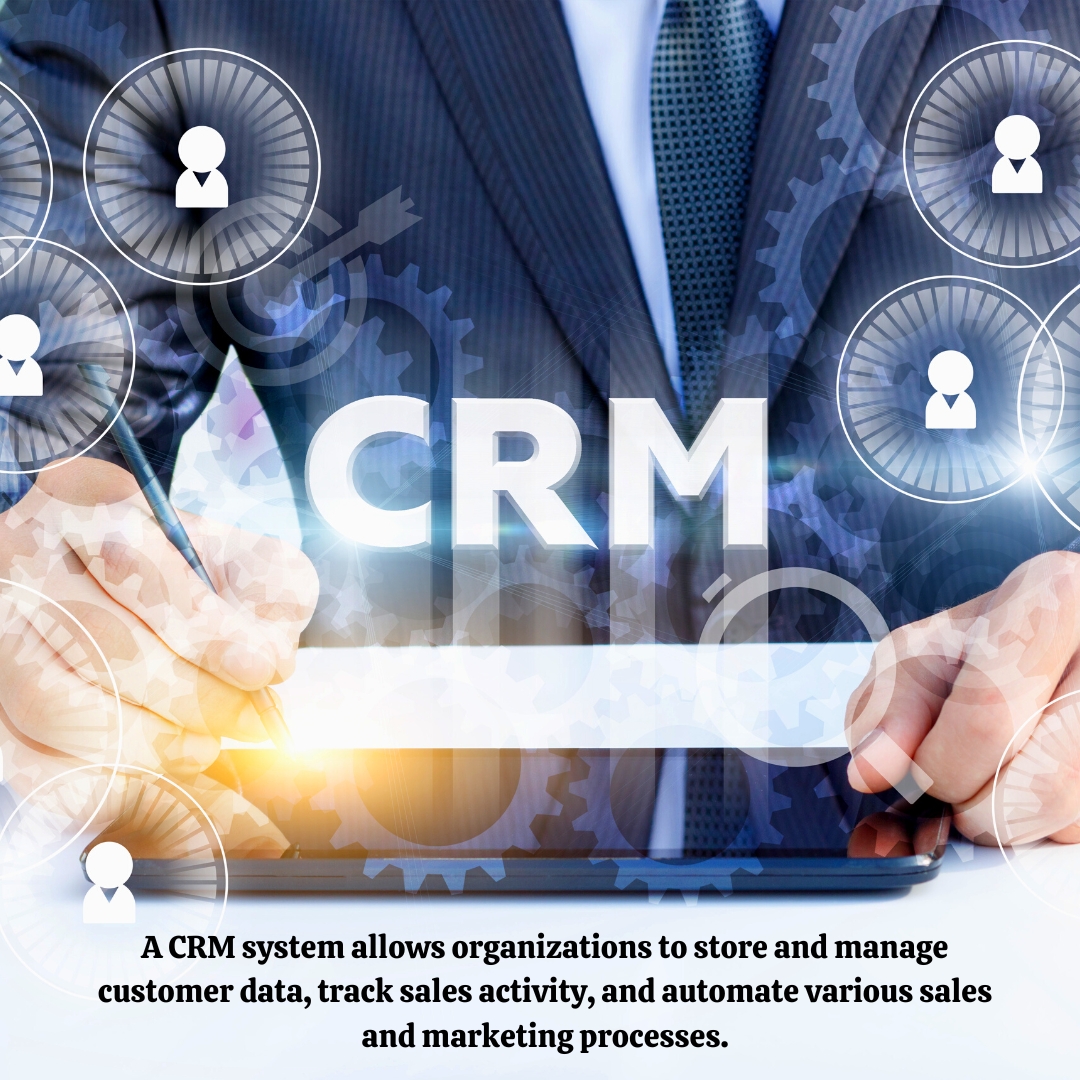Only Sales CRM: 7 Powerful Reasons It’s a Game-Changer
Looking for a CRM that cuts through the noise and focuses purely on sales? Meet the only sales CRM—designed to supercharge your team’s performance with laser-focused tools and zero distractions.
What Is an Only Sales CRM?

The term only sales CRM refers to a customer relationship management system built exclusively for sales teams. Unlike full-suite CRMs that include marketing, service, and analytics modules, an only sales CRM strips away the extras to deliver a streamlined, agile platform dedicated solely to closing deals.
Core Definition and Purpose
An only sales CRM is engineered with one goal: to help sales professionals manage leads, track interactions, forecast revenue, and close more deals—faster. It eliminates unnecessary features that can slow down workflows, offering a lean interface tailored to the daily tasks of sales reps and managers.
By focusing exclusively on the sales pipeline, these systems enhance usability, reduce training time, and improve adoption rates across teams. According to Salesforce, companies using CRM see a 29% increase in sales performance—making the right CRM choice critical.
How It Differs from Traditional CRMs
Traditional CRMs like HubSpot or Zoho offer broad functionality across marketing, sales, and customer service. While powerful, they often come with steep learning curves and feature bloat. An only sales CRM, in contrast, prioritizes simplicity and speed.
- Focus: Sales-only tools emphasize lead tracking, deal progression, and communication logging.
- Interface: Clean, intuitive dashboards designed for quick data entry and real-time updates.
- Integration: Often integrates with external marketing and support tools rather than building them in-house.
“The best sales tools don’t add complexity—they remove friction.” — Sales Leadership Report, 2023
Top 7 Benefits of Using an Only Sales CRM
Adopting an only sales CRM brings transformative advantages. From boosting productivity to enhancing forecasting accuracy, here’s how it reshapes the sales landscape.
1. Increased Sales Team Productivity
Sales reps waste up to 64 minutes per day on administrative tasks, according to Nucleus Research. An only sales CRM reduces this burden by automating data entry, logging calls, and syncing emails.
With fewer clicks and faster navigation, reps spend more time selling. Features like one-click logging, voice-to-text notes, and mobile access ensure no opportunity slips through the cracks.
2. Enhanced Pipeline Visibility
Managers gain real-time insight into every stage of the sales funnel. An only sales CRM provides dynamic pipeline views, color-coded deal statuses, and drag-and-drop deal movement.
This transparency enables proactive coaching, early identification of stalled deals, and better resource allocation. Teams can filter by rep, region, product, or time frame to uncover trends and bottlenecks.
3. Improved Forecasting Accuracy
Accurate forecasting is the backbone of strategic planning. With an only sales CRM, historical data, win rates, and deal progression patterns feed into predictive models.
Unlike general CRMs that may dilute sales data with marketing KPIs, these systems offer clean, sales-specific analytics. This leads to forecasts that are up to 40% more accurate, according to Gartner.
Key Features of a High-Performance Only Sales CRM
Not all CRMs marketed as ‘sales-only’ deliver the same value. To truly qualify as an only sales CRM, a platform must include essential features that directly support selling activities.
Lead and Contact Management
This is the foundation. An effective only sales CRM allows reps to store, segment, and prioritize leads based on criteria like source, industry, or engagement level.
Advanced systems use AI to score leads automatically, flagging high-intent prospects for immediate follow-up. Integration with LinkedIn and email campaigns ensures seamless lead capture.
Deal Tracking and Pipeline Stages
A visual pipeline is non-negotiable. The CRM should let users define custom stages (e.g., ‘Discovery Call’, ‘Proposal Sent’, ‘Negotiation’) and track movement with minimal effort.
Drag-and-drop functionality, stage-specific checklists, and automated reminders keep deals moving forward. Each deal record should include key details: value, close date, probability, and next steps.
Activity Logging and Automation
Manual logging kills momentum. The best only sales CRM platforms auto-log calls, emails, and meetings from integrated calendars and communication tools.
- Email tracking shows when prospects open messages.
- Call recording and transcription capture critical details.
- Task automation schedules follow-ups and updates deal status based on triggers.
“Automation in sales isn’t about replacing people—it’s about empowering them.” — Harvard Business Review
Top 5 Only Sales CRM Platforms in 2024
Choosing the right tool is crucial. Here are five leading only sales CRM solutions that stand out for performance, usability, and sales-specific design.
1. Pipedrive
Pipedrive is often hailed as the quintessential only sales CRM. Its visual pipeline interface makes deal progression intuitive, and its focus on usability has earned it high adoption rates.
Key strengths include workflow automation, sales reporting, and a robust API for integrations. It’s ideal for small to mid-sized sales teams looking for simplicity without sacrificing power.
2. Close CRM
Close CRM combines a built-in phone, email, and SMS system with a streamlined CRM interface. Designed by salespeople for salespeople, it minimizes context switching.
Its power dialer, automated sequences, and real-time coaching features make it a favorite among high-volume sales teams. Close also offers deep analytics on rep performance and call outcomes.
3. Freshsales (by Freshworks)
Freshsales offers AI-driven insights and a clean UI focused on sales execution. While part of a larger suite, its sales-first approach earns it a spot on this list.
Features like behavior tracking, lead scoring, and built-in phone/email keep reps engaged without leaving the platform. Its AI assistant, Freddy, predicts deal health and suggests next actions.
How to Choose the Right Only Sales CRM for Your Team
Selecting an only sales CRM isn’t just about features—it’s about fit. The wrong tool can hinder adoption and reduce ROI. Follow these steps to make the best choice.
Assess Your Sales Process
Map out your current sales stages, touchpoints, and pain points. Does your team struggle with follow-ups? Is forecasting inconsistent? Use this audit to identify what the CRM must solve.
A CRM that aligns with your process will be adopted faster and deliver quicker wins. For example, if your team makes 50+ calls daily, a built-in dialer is essential.
Consider Scalability and Integration
Even if you’re a small team now, plan for growth. Can the only sales CRM handle more users, data, and integrations as you scale?
Check compatibility with tools you already use: email platforms (Gmail, Outlook), calendars, LinkedIn, and marketing automation (like Mailchimp or ActiveCampaign). APIs and native integrations reduce friction.
Test for User Adoption
No matter how powerful a CRM is, it fails if reps don’t use it. Prioritize platforms with intuitive interfaces, mobile access, and minimal training requirements.
Run a pilot with a small team. Gather feedback on ease of use, speed, and perceived value. High adoption often correlates with low click counts and fast data entry.
Common Challenges and How to Overcome Them
Implementing an only sales CRM isn’t without hurdles. Awareness and preparation are key to a smooth rollout.
Resistance from Sales Teams
Sales reps often view CRMs as extra work. To combat this, involve them early in the selection process and highlight time-saving benefits.
Show how automation reduces manual logging and how insights can help them close more deals. Provide incentives for consistent use, such as leaderboards or performance bonuses.
Data Migration Issues
Transferring data from old systems can be messy. Clean your data before migration—remove duplicates, standardize formats, and verify contact details.
Use CSV imports or professional migration services if available. Test the data in the new CRM to ensure accuracy before going live.
Underutilization of Features
Many teams use only 30-40% of their CRM’s capabilities. Combat this with ongoing training, in-app tutorials, and regular check-ins.
Assign a CRM champion on the team to answer questions and share best practices. Schedule quarterly reviews to explore underused features.
Future Trends Shaping the Only Sales CRM Landscape
The only sales CRM is evolving rapidly. Emerging technologies and changing buyer behaviors are driving innovation in sales tools.
AI-Powered Sales Coaching
AI is moving beyond data entry to active coaching. Future CRMs will analyze call transcripts, email tone, and response times to provide real-time feedback.
For example, AI might suggest better phrasing during a negotiation or flag a drop in engagement from a key contact. These insights help reps improve continuously.
Hyper-Personalization at Scale
Buyers expect personalized experiences. Next-gen only sales CRM systems will leverage AI to tailor outreach based on behavioral data, past interactions, and even sentiment analysis.
Imagine a CRM that auto-generates personalized email drafts based on a prospect’s recent blog post or social media activity—saving time while increasing relevance.
Mobile-First and Voice-Activated Interfaces
As remote selling grows, mobile functionality becomes critical. Future CRMs will prioritize mobile UX, with voice commands for logging activities or updating deals.
Voice-to-CRM integration could allow reps to say, “Log call with Sarah, discussed pricing, next step: send contract,” and have it auto-recorded and linked to the deal.
What is an only sales CRM?
An only sales CRM is a customer relationship management system designed exclusively for sales teams. It focuses on lead management, deal tracking, and sales forecasting without the added complexity of marketing or service modules.
How does an only sales CRM improve sales productivity?
By automating routine tasks like data entry, logging calls, and scheduling follow-ups, an only sales CRM frees up reps to focus on selling. Its streamlined interface reduces training time and increases user adoption.
Can an only sales CRM integrate with marketing tools?
Yes, most only sales CRM platforms offer integrations with marketing automation tools like Mailchimp, HubSpot, or ActiveCampaign. This allows sales teams to receive enriched lead data without managing marketing campaigns directly.
Is Pipedrive a true only sales CRM?
Yes, Pipedrive is widely regarded as a pure-play only sales CRM. Its interface is built around a visual sales pipeline, and its features are tailored to sales execution, forecasting, and activity management.
What should I look for when choosing an only sales CRM?
Focus on ease of use, pipeline customization, automation capabilities, mobile access, and integration options. Also, consider scalability and the level of customer support provided.
Adopting an only sales CRM is more than a software upgrade—it’s a strategic shift toward a leaner, faster, and more effective sales operation. By eliminating distractions and focusing on what matters most—closing deals—these tools empower teams to perform at their peak. Whether you’re a startup or a growing sales organization, the right only sales CRM can be the catalyst for predictable growth and long-term success.
Recommended for you 👇
Further Reading:
